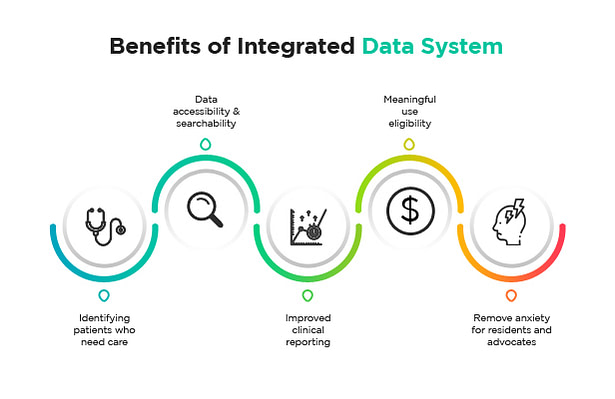Electronic health records (EMR systems) are a repository of medical information about patients stored in digital format. It contains data like demographics, immunizations, allergies, previous treatments, history of medication, test results, radiology reports, progress notes, history of substance abuse (if any), and so forth. It paints a thorough picture of a patient’s health situation and enables doctors to make informed decisions.
One of the best advantages of using EHR medical software is its ability to integrate with other medical technologies. As a result, small clinics, ambulatory care centers, as well as large hospitals can experience faster workflows that are more efficient and also need lesser overhead. Let’s look at some of the ways that the integration of EHR software with other health technologies can help –
Data Analytics
It is one of the most promising healthcare technologies that has the potential to help doctors predict who is at greater risk. By combining an EMR solution (electronic medical records) with a healthcare data analytics module, physicians can gain the insights derived from assessing historic and current medical and demographic data of patients to identify who might be at greater risk of certain diseases.
This is especially helpful for people with chronic conditions. Analyzing their medical histories and current vitals sheds light on their health situation and helps to predict who would respond well to treatment. By knowing beforehand whose health might turn out in what way, doctors will be empowered to stage early interventions for preventing the progression of the disease. In other words, integrating data analytics solutions with EHR and EMR systems is bound to improve the clinical outcomes for patients.
E-Prescriptions
Pharmacists often deal with a large number of patients picking up their prescriptions each day. An electronic prescriptions software enables doctors to write prescriptions for each patient and send it across to pharmacies directly. It avoids the trouble of pen and paper-based prescriptions, which also carry the problem of illegible handwriting. By integrating EMR software solutions with e-prescriptions, doctors can view the patient’s history before prescribing any medication, with a few clicks on a screen.
This enables doctors to ascertain if a patient might suffer from side effects or allergic reactions to any pills. If a physician does find out that a patient might be allergic to a certain medication, he or she can change it without affecting the patient’s health.
Telemedicine
Telemedicine is one of the hottest topics in healthcare technology. It enables providers to offer care and relevant services remotely through the internet and telecommunication channels. A telemedicine application merged with EMR software systems enables doctors to access a patient’s medical history during a session of virtual consultation. This allows the doctor to know more about the patient’s health during the session and be more effective. It goes without saying that a telemedicine app that can retrieve patient history with a few clicks has to be an integral part of remote care in general.
EMR software systems integrated with telemedicine solutions are a boon for patients who can’t travel to see their provider in person. These factors make Electronic health records system integration a triumph of medical technology.
0






